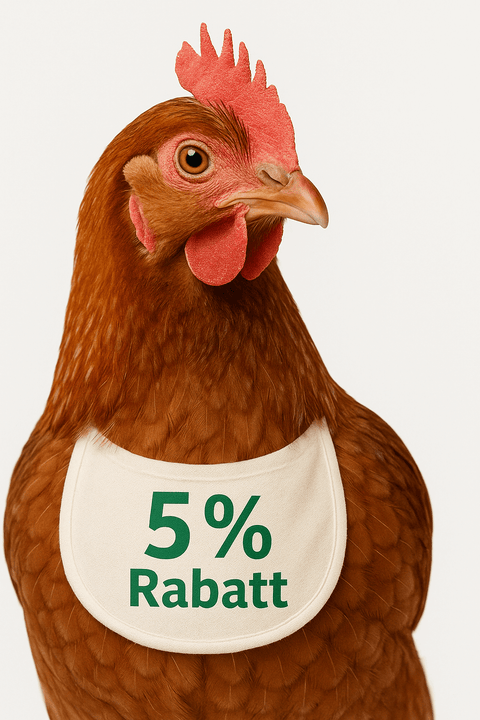Why do chicken eggs have different colors?
Colorful eggs are not only available at Easter
Whether red, blue, or purple: brightly colored chicken eggs are especially popular around Easter. They can be decorated for the holidays in just a few easy steps. This can even be achieved using natural ingredients such as onion skins, tea, or spinach. Colorful eggs aren't just found around Easter. Eggs of all colors also occur in nature. Some are white, brown, green-blue, speckled, or contain shades in between. The different colors aren't just pleasing to the eye, they also serve an important function. They camouflage the eggs from predators. Brown or greenish eggs in an open nest are harder to spot. But how do chickens develop colorful eggshells?
Chickens release color pigments into eggshells
This isn't—as many assume—related to the quality of the egg or the color of the birds' feathers. Genetics is the primary factor. Every chicken has a shell gland in its oviduct. This gland produces various pigments that color the eggshells, which are largely made of calcium carbonate.
Yellow pigments come from bile, red from the blood pigment hemoglobin. This mixing creates a brown hue. The colored eggs depend on which pigments are deposited in the shell. This largely depends on the breed of the chicken. If the chickens lay white eggs, no pigment is produced. The chickens' diet has only a minor influence on eggshell color and can only make it appear lighter or darker.
By the way: The Maran chicken breed, which originated in France, is known for producing chocolate-brown shell colors. The eggs are particularly dark at the beginning of the laying period. They lay between 180 and 200 eggs per year. However, they take a break in winter.
Older chicken breeds lay colored eggs
Commercially, only white and brown chicken eggs are usually offered, as these poultry breeds have a higher laying performance. So-called high-yield hens in industrial farming lay around 300 eggs per year. However, they don't live particularly long.
Older breeds, on the other hand, are significantly more robust than the egg-laying hydrides and can lay eggs for many years – some even in winter. In addition, the older breeds in particular produce the most colorful eggs, but lay less frequently. For example, the German Lachshuhn can lay up to 160 eggs per year, while the Ramelsloher can lay up to 170.
Egg production in winter can decrease significantly
Not only with age, but especially in winter, egg production can decline due to the nutrient-poor environment and freezing temperatures. As the days become shorter and the light diminishes, egg production decreases. The birds slow down their metabolism in the dark. Some breeds, such as Marans, even stop laying in the fall. Others, however, lay fresh eggs throughout the winter. These include the Sundheimer, which is considered particularly robust and can lay up to 220 eggs a year.
With these tips you can support the laying performance of your chickens in winter
But don't worry: With a few tips, you can boost egg production in your chicken coop during the winter. A balanced diet with the necessary proteins, minerals, and vitamins is essential. Since there are hardly any wild herbs in the meadows in winter, the birds rely on the nutrients in their feed. Little tip: By adding the KE herbal extract By adding the missing active ingredients from natural herbs to the feed or drinking water, the chickens can be optimally supplied with the nutrients they need. The better the birds absorb and digest their feed, even in winter, the happier they are, which in turn leads to an improvement in their naturally declining egg production.
There are other tricks you can use to help your chickens lay eggs in winter:
- Lighting of certain areas in the chicken coop (e.g. drinking trough)
- sufficient green fodder
- Do not let water freeze
Chickens also need variety, especially during the dreary and dark season. Keeping them busy stimulates their instinct to explore and search for food. Feeding balls or hay nets can help combat boredom in the henhouse. Regular dust baths with Cumbasil Mite Not only do they keep the birds busy, but they also help them pursue their natural behavior – brooding. This helps them clean their feathers. Because the ground is often frosty in winter, the hens can hardly roll around in the dirt to their heart's content. At the same time, the coops are usually very humid with the falling temperatures. By spreading the dust bath around the coop while the birds fluff up, the bedding stays drier, as Cumbasil Mite binds the moisture. These tips help keep the hens busy and prepare them for the warmer days, so that the colorful eggs will be in the nest around Easter.


